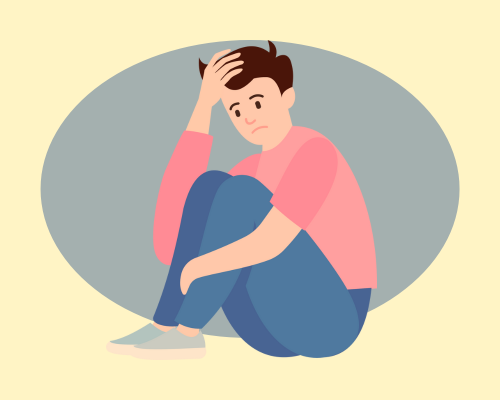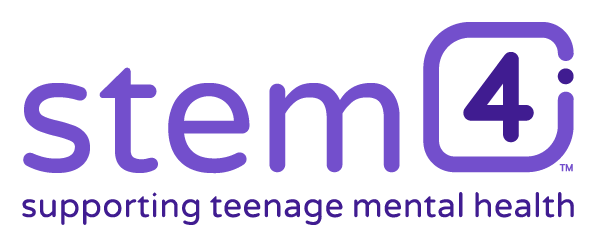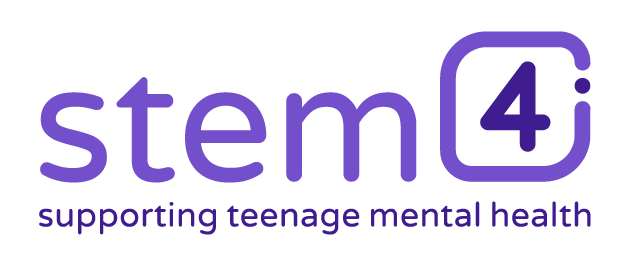Self-harm
FAQs

Self-harm is when someone hurts themselves intentionally, usually to deal with a difficult emotion.
The main type of self-harm referred to is self-caused physical harm. However, self-harm can also refer to any intentional harm behaviour such as drinking to cause damage, eating to cause pain or frequently being in damaging relationships.
People self-harm for a number of reasons. Some of the reasons include as a way to release emotions, to express emotional pain, because they feel numb, as a habitual behaviour or because they dislike themselves.
There are many effective ways to stop self-harming. The first is to make a decision to stop. Make harming yourself less easy by putting away triggers, changing your routine and tell someone you trust that you are going to make a stop.
Download the Calm Harm app that helps manage the urge to self-harm. The app provides a timer to delay giving into the urge whilst providing a range of activities and self-reflections to help. It also provides a breathing exercise to help calm.
There are helplines you can call or make sure you phone a friend. Remind yourself of the consequences of your actions such as scars. Read about or get some help to challenge negative thoughts. Work on building self-esteem. Alcohol and drugs can increase self-harm – you may need to first stop the use of these to effectively stop self-harm. Get help for underlying reasons for self-harm such as anxiety or depression.
Listening to someone who is self-harming can provide huge support. Arrange some private time and focus on what they tell you, making sure to be non-judgemental. Be empathetic (which means understanding things from their point of view) and let them know you are there for them.
Don’t take control, let them lead the conversation and make their own choices. Encourage and support them to seek help if you are worried about their safety. Talk in confidence to someone who can help. Ultimately, friends who are self-harming have a big emotional effect on you, so make sure you talk to someone about how it may be affecting you. Remain their friend but don’t be their therapist.
Keeping avenues of communication open is the first step. This means not getting angry and asking too many questions. It is not helpful to insist the child or young person describe how they self-harm or to show you. Focus on the whole person rather than on the behaviour. This means asking about things that might be bothering them, what they might be worried about, their mood, etc.
Don’t take away their sharp implements before they have alternative ways to deal with the reasons that trigger self-harm. Also, avoid trying to physically prevent them from self-harming since this will only drive the behaviour underground. This doesn’t mean you have to accept the self-harm, it means trying to work with them a solution to making a change.
Keep the same boundaries you always have. It is always worth getting an assessment from a professional on risk and to check on physical safety caused by harm, for example, that the cuts are not infected.
If a child or young person comes to you with an injury stay calm. They will usually be scared and over-reacting in this instance doesn’t help. Treat the wound or seek medical attention. Comfort them but restrain from asking too many questions to start with.
You may see frequent injuries, not easily attributable to an accidental cause, or be told by someone close to the person such as a friend or the person themselves. Sometimes people will cover up inappropriately, for example wearing sleeves or long trousers even when it is really hot, or they may refuse to wear a swimsuit when it wasn’t a problem before.
Improving knowledge and awareness for children and young people through mental health education, building skills to deal with life’s challenges, providing strategies to reduce stress, providing easily accessible resources such as the Calm Harm app to help manage the urge, providing more mental health support in schools, colleges and universities, being able to access help easily via GPs can all help prevent self-harm.
The first step is to see your GP. They can refer you to mental health services. Helpful organisations include Childline, Samaritans, Mind, The National Self Harm Network, and YoungMinds Parent helpline. stem4 has a guide to Talking to your teenager about self-harm and a leaflet on Asking for help.
The Calm Harm app says ‘the urge to self-harm is like a wave’. It’s strongest when you start wanting to do it and will build to a peak. If you find alternative things to do or you can delay giving in in order to ‘surf the wave’ this will help you to combat the urge.
For milder problems, there are also some effective self-help programmes. Your GP should be your first port of call.
Using a variety of alternatives to self-harm will help you get through intense urges. The coping strategies help to manage the behaviour but it’s important to get to the root of why you want to do it by seeking professional help. The Calm Harm app provides a range of tasks, which fall into four different categories: ‘Distract’ to help you ‘surf the wave’ to self-harm, ‘Comfort’ which helps comfort rather than harm, ‘Express’ which helps get the feelings out in a different way and ‘Release’ which provides safe alternatives to self-harm.
Toolkits generally provide information on identification, practical steps to manage immediate symptoms and resources. Self-harm resources include informative websites, leaflets and fact sheets, helplines, web communities, services, books, and carer support.
Websites:
stem4.org.uk, harmless.org.uk, rethink.org
These organisations also produce leaflets and fact sheets.
Helplines:
111, 999, supportline.org.uk, Samaritans, selfharm.co.uk, 7cups.com
GPs can refer to local mental health professionals.
Books:
Self-harm: The Path to Recovery, Middleton & Garvie; Who’s Hurting Who? Spandler.
Calm Harm app is available on App Store and Google Play.
There are a range of treatments to help recover from self-harm. Since each individual and their reasons for self-harm will vary, having a thorough assessment from a specialist will help decide on the correct treatment. The range of available treatment includes medication and psychological treatments with specific reference to Dialectic Behaviour Therapy (DBT), Mentalisation Based Therapy (MBT) and targeted Cognitive Behaviour Therapy (CBT).
The exact number of people who self-harm is unknown since it is a secret behaviour. However, according to 2015 figures approximately 10% of young people self-harm. The NHS confirms that the number of young people self-harming has risen dramatically in the past 10 years.
It is unclear of the precise reasons but a rise in stress and serious psychological conditions has been seen as a likely cause. In addition, there is a larger spread of information via digital means, which possibly makes the methods used to manage stress known.
Schools are providing education to children and young people about practical ways to manage their stress and distress as well as train parents and teachers to spot early signs. Primary care professionals such as GPs and school nurses are linking more with schools to provide medical support, intervention and referrals.
The Calm Harm app helps users manage the urge to self-harm. This is a good place to look for mental health apps as apps on here have been through a rigorous accreditation process. Please note that the Calm Harm app is an aid to treatment, but doesn’t replace it.


